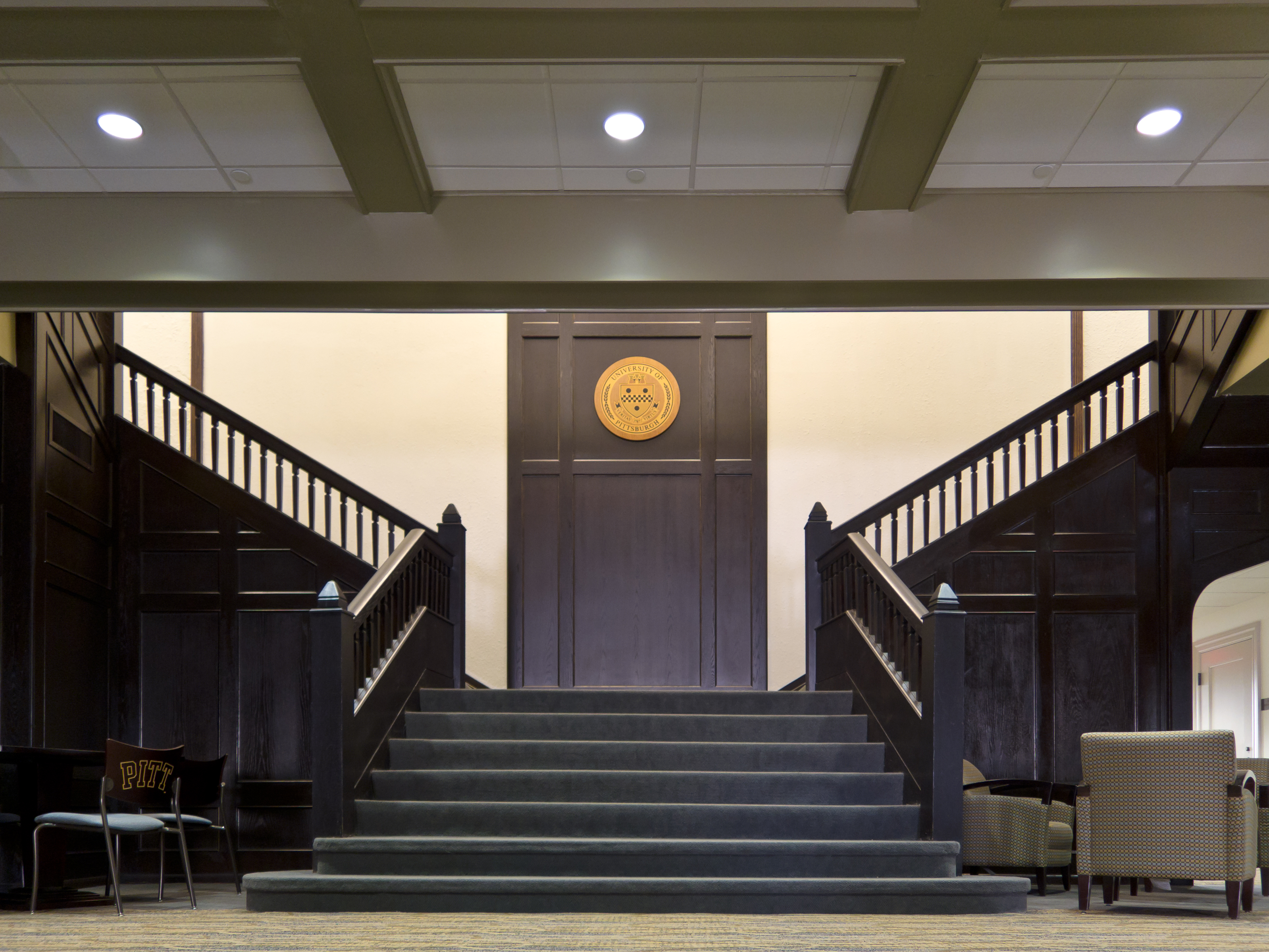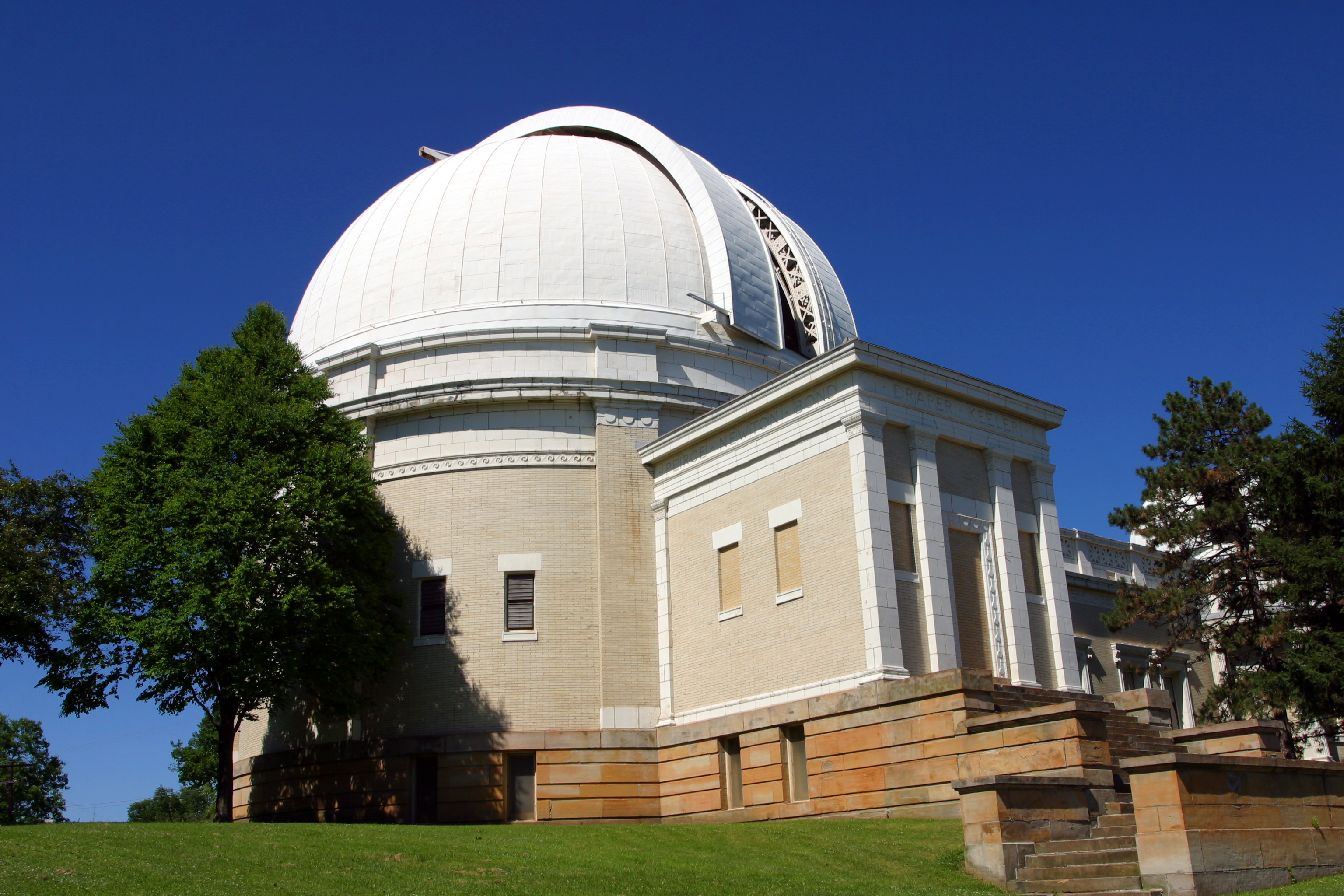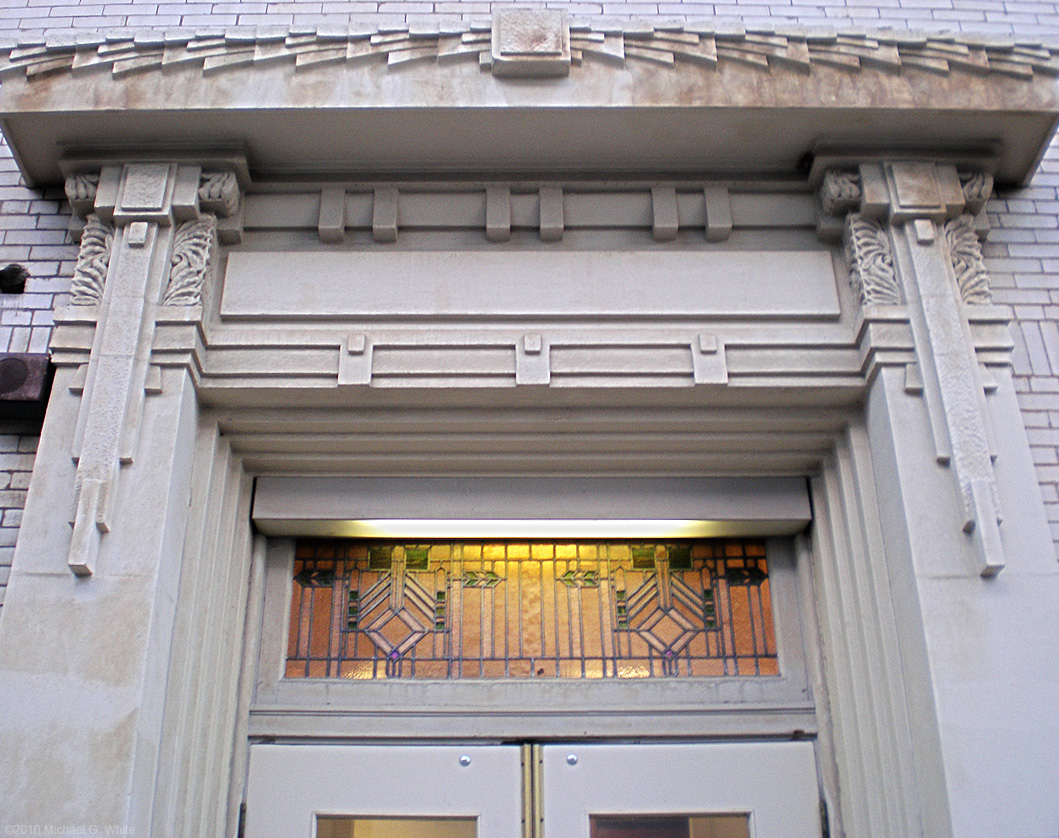|
Concordia Club
The O'Hara Student Center, formerly the Concordia Club, is a three-story, building on the campus of the University of Pittsburgh on O'Hara Street in the Oakland neighborhood of Pittsburgh, Pennsylvania. It is a contributing property to the Schenley Farms National Historic District and the City of Pittsburgh Oakland Civic Center Historic District. The building was acquired by the university in mid-December, 2009. and has since been renovated to house academic and student activity programs. History On January 21, 1874, a group of prominent German Jews, mostly members of the Rodef Shalom Congregation, met for the purpose of organizing a private club in Pittsburgh, "to promote social and literary entertainment among its members." The small group establishing the Jewish social club voted to host it at a private residence on Pittsburgh's North Side and voted Judge Josiah Cohen to be its first president. The popularity of the Club called for a move to larger quarters on Stockton Stre ... [...More Info...] [...Related Items...] OR: [Wikipedia] [Google] [Baidu] |
University Of Pittsburgh
The University of Pittsburgh (Pitt) is a public state-related research university in Pittsburgh, Pennsylvania. The university is composed of 17 undergraduate and graduate schools and colleges at its urban Pittsburgh campus, home to the university's central administration and around 28,000 undergraduate and graduate students. The 132-acre Pittsburgh campus includes various historic buildings that are part of the Schenley Farms Historic District, most notably its 42-story Gothic revival centerpiece, the Cathedral of Learning. Pitt is a member of the Association of American Universities and is classified among "R1: Doctoral Universities – Very high research activity". It is the second-largest non-government employer in the Pittsburgh metropolitan area. Pitt traces its roots to the Pittsburgh Academy founded by Hugh Henry Brackenridge in 1787. While the city was still on the edge of the American frontier at the time, Pittsburgh's rapid growth meant that a proper university was so ... [...More Info...] [...Related Items...] OR: [Wikipedia] [Google] [Baidu] |
Jewish Criterion
The Jewish Criterion (OCLC 2262915) whose editors included J. Leonard Levy (rabbi of Rodef Shalom) and Charles H. Joseph, was one of two weekly papers for Jews in Pittsburgh. It was published 1895-1962, with the initial editor being M. K. Susman. WorldCat annotates it as the "Oldest English printed Jewish weekly representing Western Pennsylvania, Eastern Ohio and West Virginia Jewry" A 1914 advertisement from the paper was used to substantiate the etymology of the word "pastrami." The Oxford English Dictionary quotes: :''Sardines and pimentos‥.Pastrami‥. Rye bread tc.' In 1962, the newspaper was replaced by the ''Pittsburgh Jewish Chronicle The ''Pittsburgh Jewish Chronicle'' is an American weekly newspaper published every Thursday for the Jewish community in the Greater Pittsburgh Region. The newspaper is owned and distributed by the Pittsburgh Jewish Publication and Education Fo ...''. References {{Pittsburgh Jews and Judaism in Pennsylvania History of Pitt ... [...More Info...] [...Related Items...] OR: [Wikipedia] [Google] [Baidu] |
University Of Pittsburgh Buildings
A university () is an institution of higher (or tertiary) education and research which awards academic degrees in several academic disciplines. Universities typically offer both undergraduate and postgraduate programs. In the United States, the designation is reserved for colleges that have a graduate school. The word ''university'' is derived from the Latin ''universitas magistrorum et scholarium'', which roughly means "community of teachers and scholars". The first universities were created in Europe by Catholic Church monks. The University of Bologna (''Università di Bologna''), founded in 1088, is the first university in the sense of: *Being a high degree-awarding institute. *Having independence from the ecclesiastic schools, although conducted by both clergy and non-clergy. *Using the word ''universitas'' (which was coined at its foundation). *Issuing secular and non-secular degrees: grammar, rhetoric, logic, theology, canon law, notarial law.Hunt Janin: "The university ... [...More Info...] [...Related Items...] OR: [Wikipedia] [Google] [Baidu] |
Jewish Clubs And Societies
Jews ( he, יְהוּדִים, , ) or Jewish people are an ethnoreligious group and nation originating from the Israelites Israelite origins and kingdom: "The first act in the long drama of Jewish history is the age of the Israelites""The people of the Kingdom of Israel and the ethnic and religious group known as the Jewish people that descended from them have been subjected to a number of forced migrations in their history" and Hebrews of historical Israel and Judah. Jewish ethnicity, nationhood, and religion are strongly interrelated, "Historically, the religious and ethnic dimensions of Jewish identity have been closely interwoven. In fact, so closely bound are they, that the traditional Jewish lexicon hardly distinguishes between the two concepts. Jewish religious practice, by definition, was observed exclusively by the Jewish people, and notions of Jewish peoplehood, nation, and community were suffused with faith in the Jewish God, the practice of Jewish (religious) ... [...More Info...] [...Related Items...] OR: [Wikipedia] [Google] [Baidu] |
Allen Hall (University Of Pittsburgh)
Allen Hall at the University of Pittsburgh is a Pittsburgh History and Landmarks Foundation Historic Landmark and a contributing property to the Schenley Farms National Historic District. Completed in 1914 and originally serving as the home to the Mellon Institute of Industrial Research, the six story Greek Revival building designed by J. H. Giesey now serves as the home of the university's Department of Physics and Astronomy. History The building that would become known as Allen Hall was erected as the original home for the Mellon Institute of Industrial Research. The institute was founded for industrial and chemical research by brothers, and University of Pittsburgh alumni, Richard B. Mellon and Andrew W. Mellon. The institute originally grew out of university's Department of Industrial Research and served as a graduate school managed by the University of Pittsburgh until it was incorporated as an independent non-profit research institute in 1927. The six story building des ... [...More Info...] [...Related Items...] OR: [Wikipedia] [Google] [Baidu] |
List Of University Of Pittsburgh Buildings
The lists of University of Pittsburgh (Pitt) and University of Pittsburgh Medical Center (UPMC) buildings catalog only the currently-existing Pitt- and UPMC-owned buildings and structures that reside within the City of Pittsburgh, Pennsylvania, the home of the university's and medical center's main campuses. Although the University and the closely affiliated University of Pittsburgh Medical Center (UPMC) are tightly intertwined both institutionally and geographically, including the sharing and leasing arrangements of resources and facilities (such as Forbes Tower, Thomas Detre Hall, the Carrillo Street Steam Plant, Hillman Cancer Center, etc.), buildings primarily owned by UPMC are listed separately because the University and UPMC are technically separate legal entities. University of Pittsburgh The major concentration of buildings that comprise Pitt's main campus is centered in the Oakland neighborhood of Pittsburgh, however a few facilities are scattered elsewhere through ... [...More Info...] [...Related Items...] OR: [Wikipedia] [Google] [Baidu] |
Gardner Steel Conference Center
Gardner Steel Conference Center (GSCC) is an academic building of the University of Pittsburgh and a contributing property to the Schenley Farms National Historic District and a Pittsburgh History and Landmarks Foundation Historic Landmark. An Early Modern structure built from 1911-1912 by architects Kiehnel and Elliott, has been noted for its capital ornamentation over the entrance doors, and the wave-like shapes repeated across the cornice which likely derive from the German art nouveau movement jugendstil. The building originally served as the Central Turnverein, a German-American social and athletic association, and later known as the Central Athletic Association. It served as the site of various athletic contests, including some involving the University of Pittsburgh. During World War I, it was used to house those in the Student Army Training Corps. Following the war, a severe space shortage at the Dental School prompted the university to purchase the building in 1920 for ... [...More Info...] [...Related Items...] OR: [Wikipedia] [Google] [Baidu] |
Sorority Row
Fraternities and sororities are social organizations at colleges and universities in North America. Generally, membership in a fraternity or sorority is obtained as an undergraduate student, but continues thereafter for life. Some accept graduate students as well. Individual fraternities and sororities vary in organization and purpose, but most share five common elements: # Secrecy # Single-sex membership # Selection of new members on the basis of a two-part vetting and probationary process known as '' rushing'' and ''pledging'' # Ownership and occupancy of a residential property where undergraduate members live # A set of complex identification symbols that may include Greek letters, armorial achievements, ciphers, badges, grips, hand signs, passwords, flowers, and colors Fraternities and sororities engage in philanthropic activities, host parties, provide "finishing" training for new members such as instruction on etiquette, dress and manners, and create networking opportu ... [...More Info...] [...Related Items...] OR: [Wikipedia] [Google] [Baidu] |
Strip District (Pittsburgh)
The Strip District is a neighborhood in Pittsburgh, Pennsylvania, United States. It is a one-half square mile area of land northeast of the central business district bordered to the north by the Allegheny River and to the south by portions of the Hill District. The Strip District runs between 11th and 33rd Streets and includes four main thoroughfares—Railroad Street/Waterfront Place, Smallman Street, Penn Avenue, and Liberty Avenue—as well as various side streets. Once home to many mills and factories, today the Strip District is home to dozens of tech and robotics companies including a rapidly growing residential population. History In the early 19th century, the Strip District was home to many mills and factories as its location along the Allegheny River made for easy transportation of goods and shipping of raw materials. It was the home of the Fort Pitt Foundry, source of large cannons before and during the American Civil War, including a bore Rodman Gun. Early industri ... [...More Info...] [...Related Items...] OR: [Wikipedia] [Google] [Baidu] |
Sconce (light Fixture)
A sconce (the word is derived from the late Latin via Old French) is a lamp-holder – either a candlestick or lantern with a handle, or a lamp fixed to a wall. In the latter case the light is usually, but not always, directed upwards and outwards, rather than down. The sconce is a very old form of fixture, historically used with candles and oil lamps. Such modern wall fittings are more often called wall lights or wall lamps. They can provide general room lighting, and are common in hallways and corridors, but they may be mostly decorative. A sconce may be a traditional torch, candle or gaslight, or a modern electric light source affixed in the same way. Usage and history Sconces can be placed on both the interior and exterior walls of buildings. In pre-modern usage, these usually held candles or gas flame, and torches respectively. Historically, candle sconces were often made of silver or brass from the 17th century, with porcelain and ormolu coming into use during t ... [...More Info...] [...Related Items...] OR: [Wikipedia] [Google] [Baidu] |
Chandelier
A chandelier (; also known as girandole, candelabra lamp, or least commonly suspended lights) is a branched ornamental light fixture designed to be mounted on ceilings or walls. Chandeliers are often ornate, and normally use incandescent light bulbs, though some modern designs also use fluorescent lamps and recently LEDs. Classic chandeliers have arrays of hanging crystal prisms to illuminate a room with refracted light, while contemporary chandeliers assume a more minimalist design that does not contain prisms and illuminate a room with direct light from the lamps, sometimes also equipped with translucent glass covering each lamp. Modern chandeliers have a more modernized design that uses LEDs, and combines the elements of both classic and contemporary designs; some are also equipped with refractive crystal prisms or small mirrors. Chandeliers are distinct from pendant lights, as they usually consist of multiple lamps and hang in branched frames, whereas pendant lights h ... [...More Info...] [...Related Items...] OR: [Wikipedia] [Google] [Baidu] |






